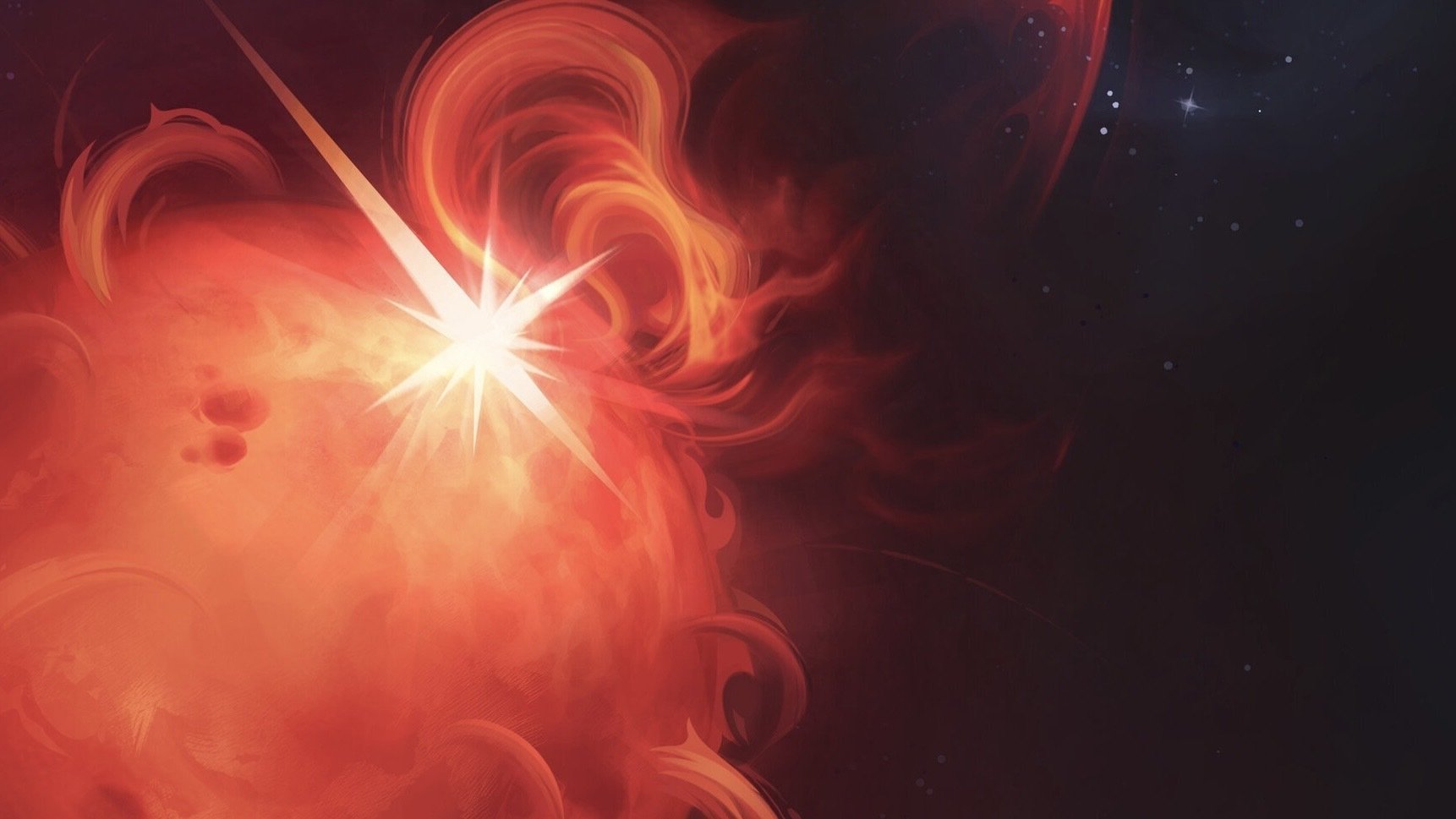Scientists detect solar storm bursting from a nearby star

Astronomers have captured the first clear evidence of a giant eruption of charged gas from a distant star, marking a turning point in the study of space weather.
The outburst came from a red dwarf star about 130 light-years away in space. It was identified as a coronal mass ejection, or CME, the kind of explosive event many people just witnessed coming from the sun in the form of psychedelic auroras. Those curtains of colors in the sky are the result of huge clouds of magnetized plasma whooshing toward the planet and interacting with gases in Earth’s air.
Scientists have long wondered whether other stars produce the same kinds of explosions. Many exoplanets orbit extremely close to their small, violent hosts. That proximity places them in the firing line of stellar eruptions that could strip away their atmospheres. If these stars have frequent and powerful blasts, it’s unlikely the nearby worlds could support life.
Detecting a CME beyond the sun ends decades of speculation about whether other stars unleash similar eruptions. Prior to this observation, researchers had only found clues, like sudden dimming or shifts in a star’s light. But an international team was able to make the discovery by detecting a two-minute burst of radio waves racing away from the star.
“This kind of radio signal just wouldn’t exist unless material had completely left the star’s bubble of powerful magnetism,” Joe Callingham of the Netherlands Institute for Radio Astronomy said in a statement.
The finding, published in Nature this week, used data from two major European observatories: the Low Frequency Array, a continent-wide network of radio telescopes, and the XMM-Newton space observatory operated by the European Space Agency.
Coronal mass ejection effects
As a CME travels, it produces a shock wave that blasts out radio waves sliding from high to low frequencies over time. The team identified this distinct pattern in the signal from the red dwarf, known as StKM 1-1262, confirming that the eruption had broken free of the star’s magnetic field and escaped into interstellar space.
“This eruption would be devastating for a planet around such a star,” said Callingham, first author of the paper.
Don’t miss out on our latest stories: Add Mashable as a trusted news source in Google.
On Earth, the atmosphere and magnetic field shield creatures against the most harmful health impacts of solar radiation during solar storms. But these events can knock out satellites and power grids. A solar flare in March 1989, for example, caused all of Quebec, Canada, to experience a 12-hour power outage. It also jammed radio signals for Radio Free Europe.
The red dwarf’s blast was extreme even by solar standards. The ejected material was moving at about 5.37 million mph, a speed recorded in only a tiny fraction of the sun’s CMEs. Such force would be enough to strip the atmosphere from any planet orbiting close to the star, leaving its surface exposed to radiation and transforming it into a bald rock, according to the research.
Red dwarf star systems and habitability
Credit: NASA / ESA / G. Bacon / J. de Wit illustration
Red dwarfs like StKM 1-1262 are smaller and dimmer than the sun but much more magnetically active. They make up most of the stars in the Milky Way and host the largest number of known planets roughly the size of Earth. Because their habitable zones — regions in space where the temperature is just right for liquid water to pool on surfaces — lie much closer to the stars, these planets are likely subjected to far more frequent stellar storms.
“It seems intense space weather may be even more extreme around smaller stars — the primary hosts of potentially habitable exoplanets,” said Henrik Eklund, a European Space Agency research fellow based in the Netherlands, in a statement.
Scientists leading a high-priority observing program with NASA’s James Webb Space Telescope are trying to answer the question of whether rocky planets circling these stars, also called M-dwarfs, can hold onto their atmospheres.
The campaign, first reported by Mashable in 2024, will use Webb to look for signs of carbon dioxide, a heat-trapping gas, using a novel method for studying atmospheres, called the secondary eclipse technique. Meanwhile, the Hubble Space Telescope will focus on the stars themselves, studying their ultraviolet radiation output.
“If you found out that none of them have atmospheres, that would be pretty sad,” Néstor Espinoza, an astronomer leading the program, told Mashable, “but also pretty interesting. It would mean that our planetary system is actually really, really special.”
Future observatories will build on this discovery to identify more stellar eruptions and map how they influence the environments of planets throughout the galaxy.
Mashable






